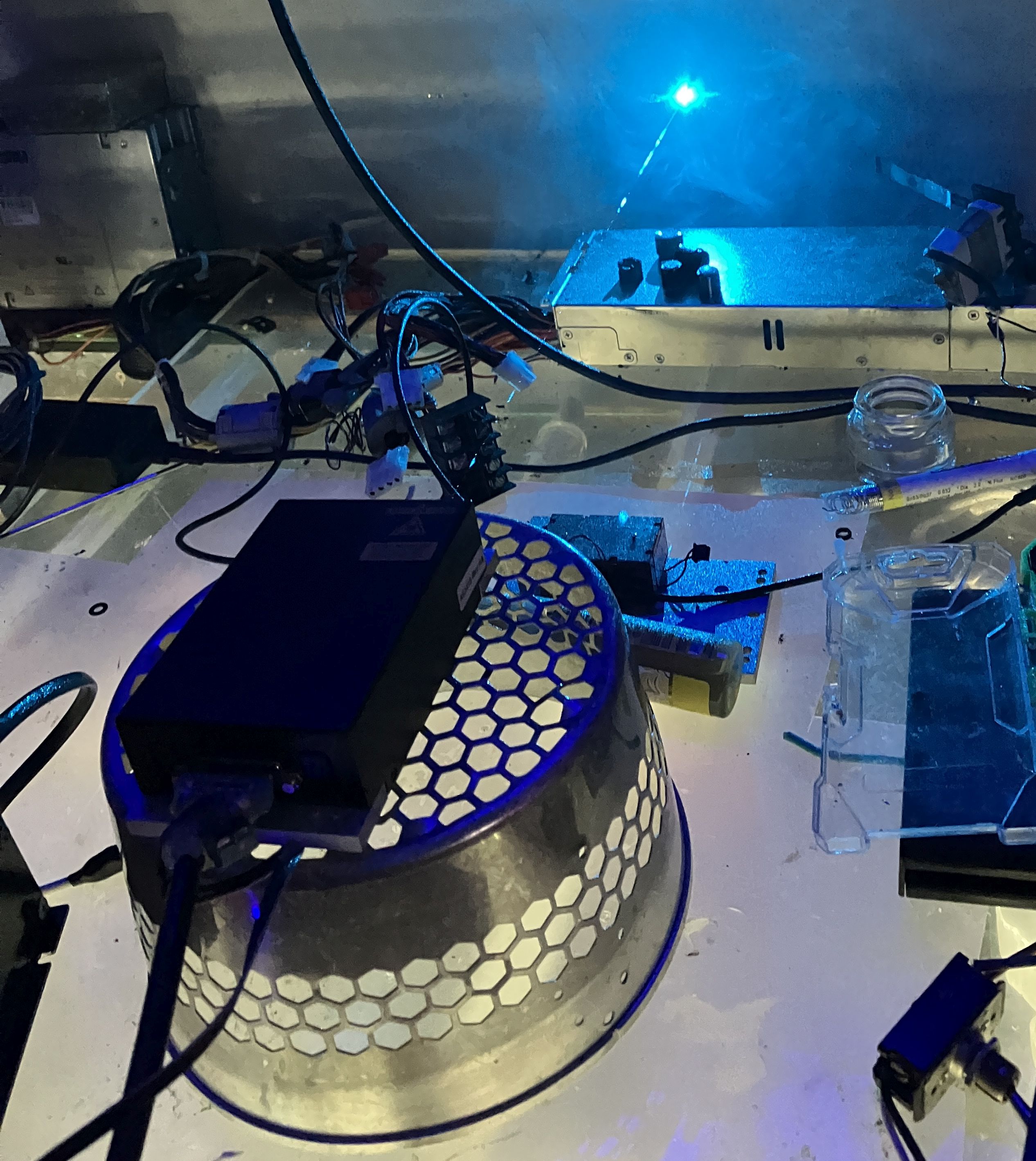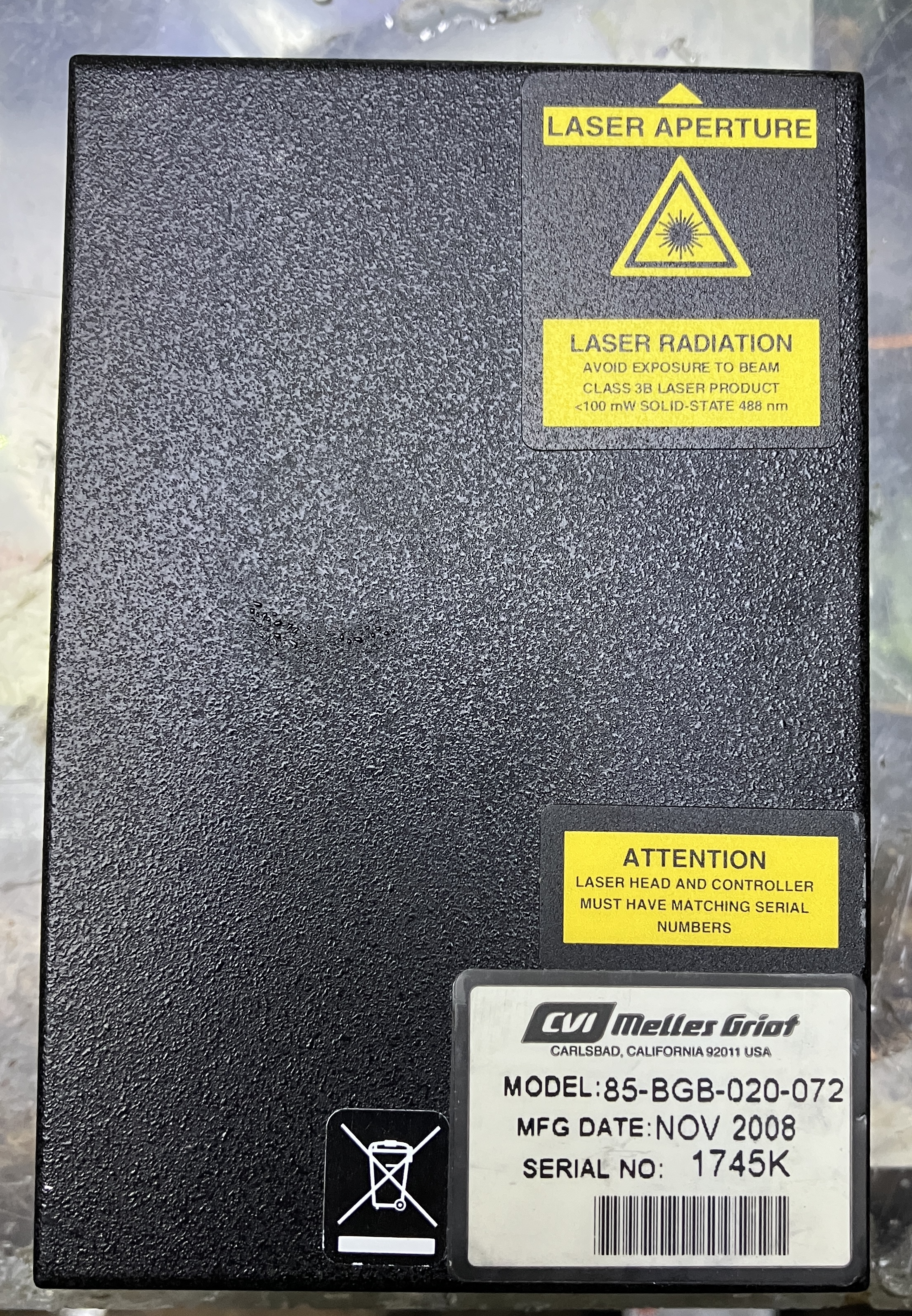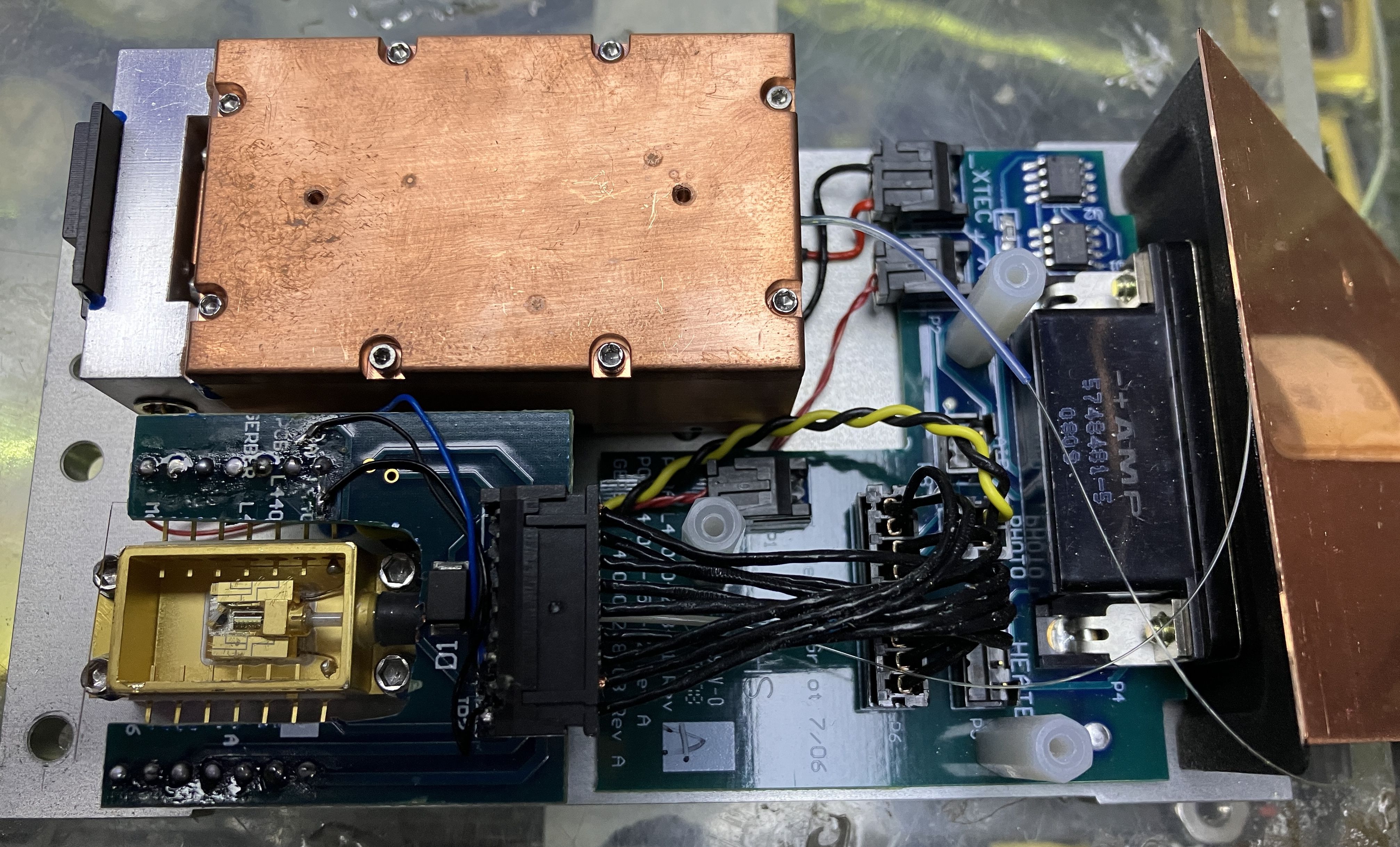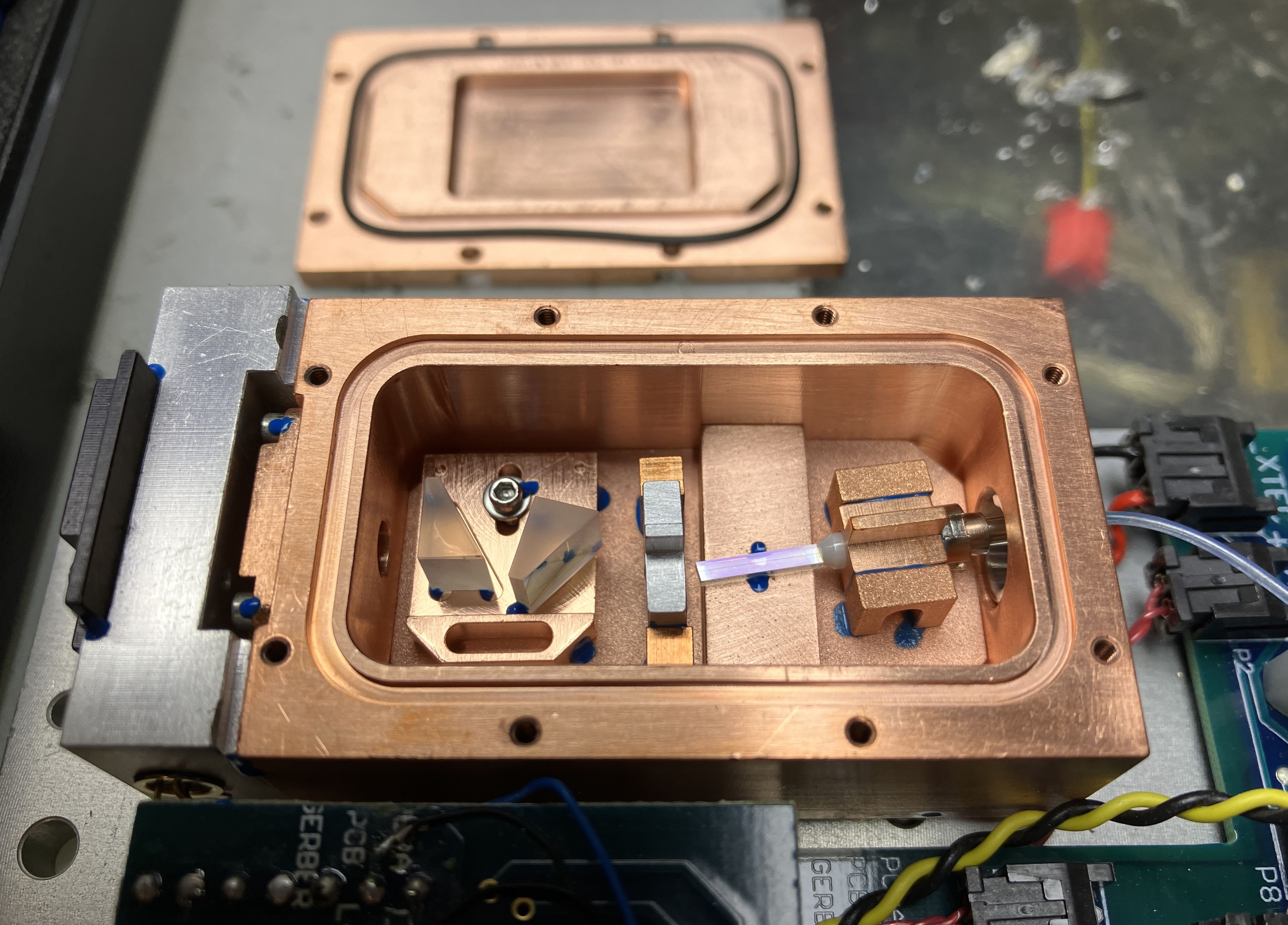The Melles Griot 85-BGB-020-072 is a frequency-doubled PPLN (Periodically Poled Lithium Niobate) laser capable of around 60mW of output power. These lasers produce an extremely high quality, narrow, and Gaussian beam of 488nm light.


These lasers use a 976nm pump diode package which is fiber coupled within the laser head. A single mode fiber with an outer diameter of 250 microns exits from the pump diode package and passes through a sealed opening into the resonator assembly. The extra length of fiber is coiled up and contained within the folded copper foil envelope on the top of the unit. This copper envelope is screwed to the top of the resonator assembly. The fiber is incredibly delicate, so be sure to handle it gently while removing it from the copper envelope or working on other parts of the laser head.

The pump diode used in these lasers is an Oclaro LC95A76ULR-20R pump-diode package. A link to the datasheet is provided at the bottom of this page. The pump diode circuit board has a small relay that is normally closed over the pump diode input to protect it from ESD (electrostatic discharge). This relay must been energized when powering up the pump diode, otherwise its input will be shorted. The laser die itself it mounted to a substrate which is mounted on a TEC (thermoelectric cooler) within the hermetically-sealed diode package. The fiber is glued directly in front of the laser die and is extremely fragile. Additionally, a thermistor and photodiode are present on the same substrate to which the laser die is mounted, these allow for monitoring of the laser diode package. The pump diode package within this laser head has had the top milled out and replaced by a small piece of glass so the internal components can be viewed. The diode circuit board has also been milled out to expose the diode package.


The copper resonator block is mounted to a TEC (thermoelectric cooler) and has a cover that can be removed by undoing the 6 screws on the top of the assembly. Removal of the cover reveals a gasket, indicating that the resonator block is a sealed unit. The optical path of the resonator assembly is as follows, starting from rear (fiber entry) to front (output window). The end of the fiber directs light into a PPLN (periodically poled lithium niobate) crystal. This crystal converts 976nm light to 488nm laser light through the process of SHG (second harmonic generation). PPLN crystals feature a unique structure that is specifically tailored to the desired wavelength. Periodic poling is achieved during manufacturing by applying a very strong electric field to the crystal. This results in sections of the crystal having an inverted structure, thus giving the crystal its target characteristics. Following the crystal is a collimating lens to focus the beam and an anamorphic prism pair to correct the beam before it exists through the output window. It is worth mentioning that PPLN crystals, and most crystals used in laser systems, require a very specific temperature range to operate optimally (or at all). A perfectly good crystal may convert little to no laser light if it's temperature is not within range. Keep that in mind when servicing or operating and laser that includes a non-linear crystal.

Further complicating this laser system is the digital circuitry contained within the laser head. The breakout board to which the DB-26 connector is mounted also includes a CMOS chip which contains information that is read by the OEM Melles Griot laser controllers. This is likely used to identify the laser head, store operating parameters, and potentially other information such as operating hours. An issue or error with this digital communication or with CMOS chip itself can prevent the driver from powering on the laser head. The OEM controller designed for use with these laser heads is the Melles Griot L44000-427-01 Universal Controller. It requires a 5V input and can be controlled and monitored over an RS-232 connection.

Zenodilodon has spent significant time working with these laser systems and covers them extensively in the video linked below. He also created a pin out for the laser head connection, we have included a screenshot of that pin out below.

Please visit the links below for more information about this laser system.